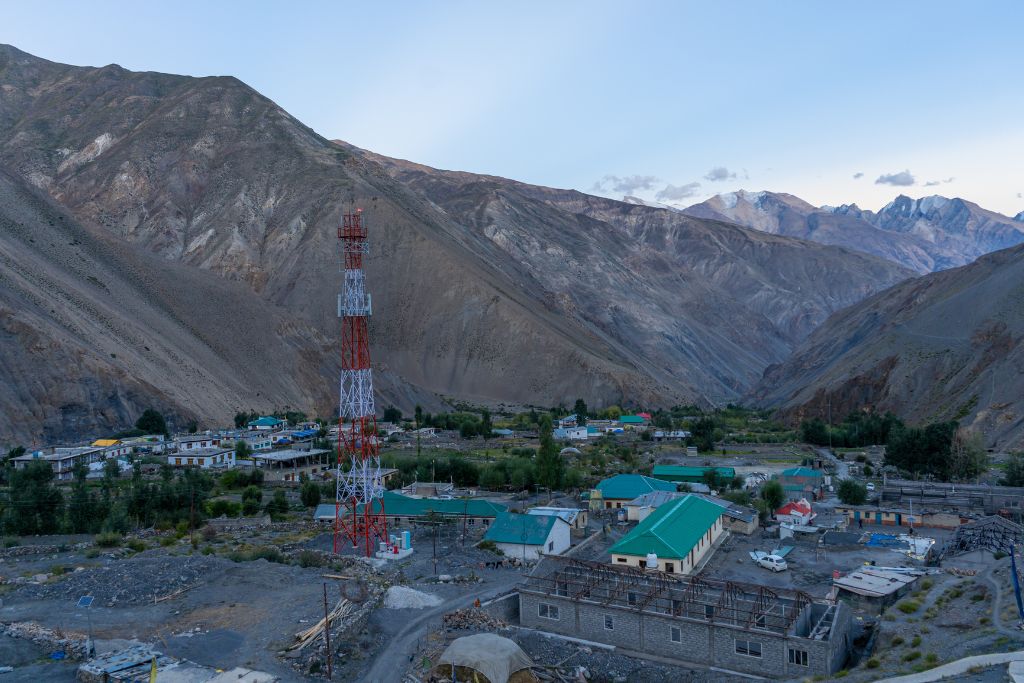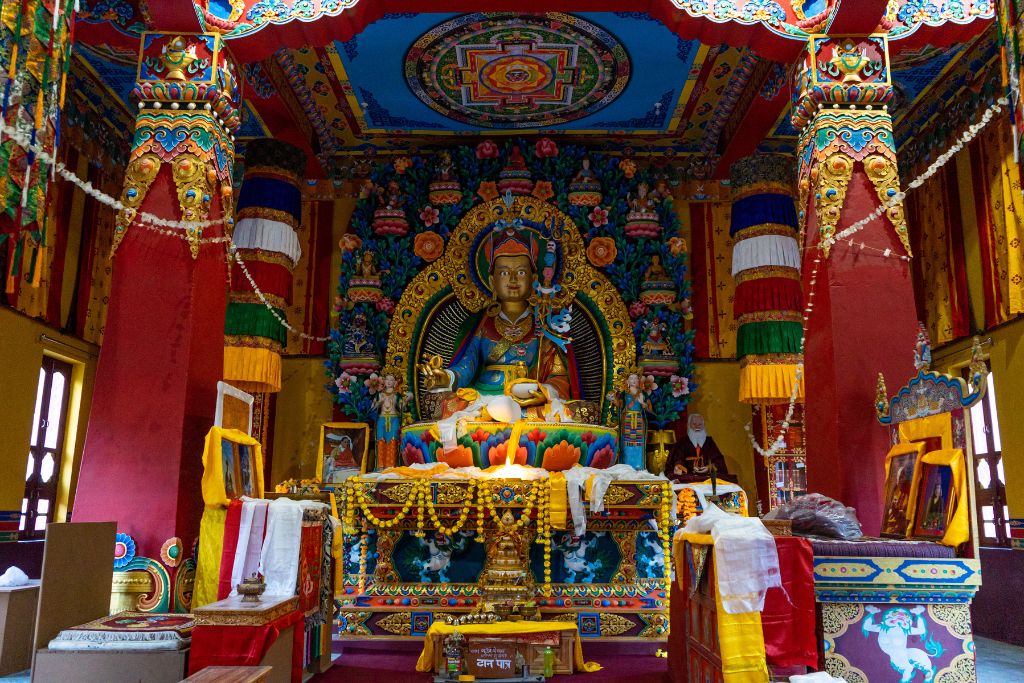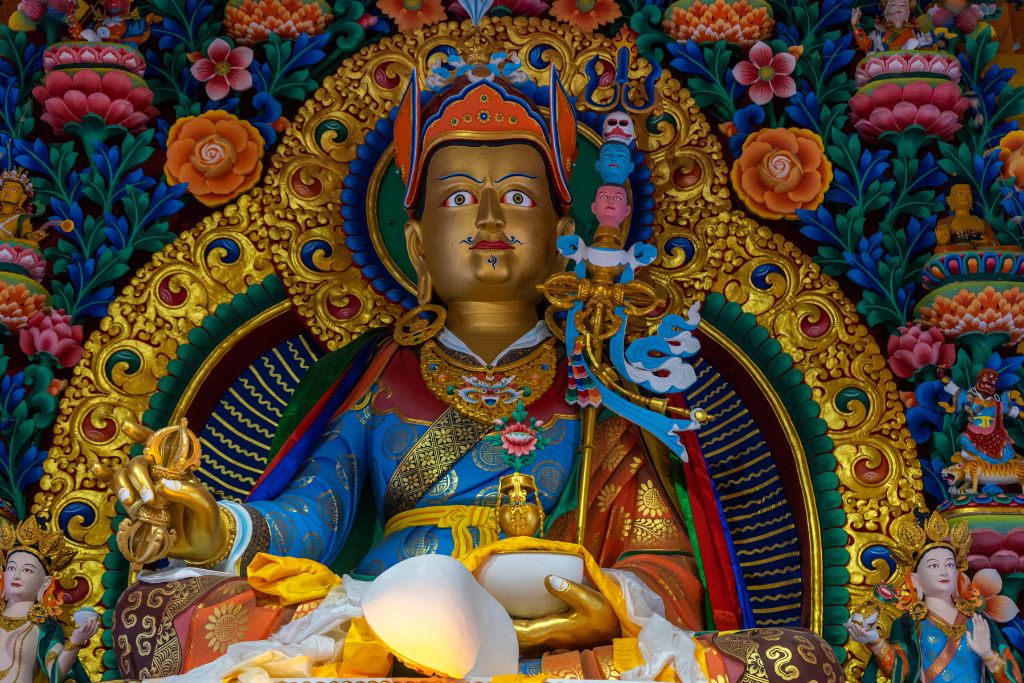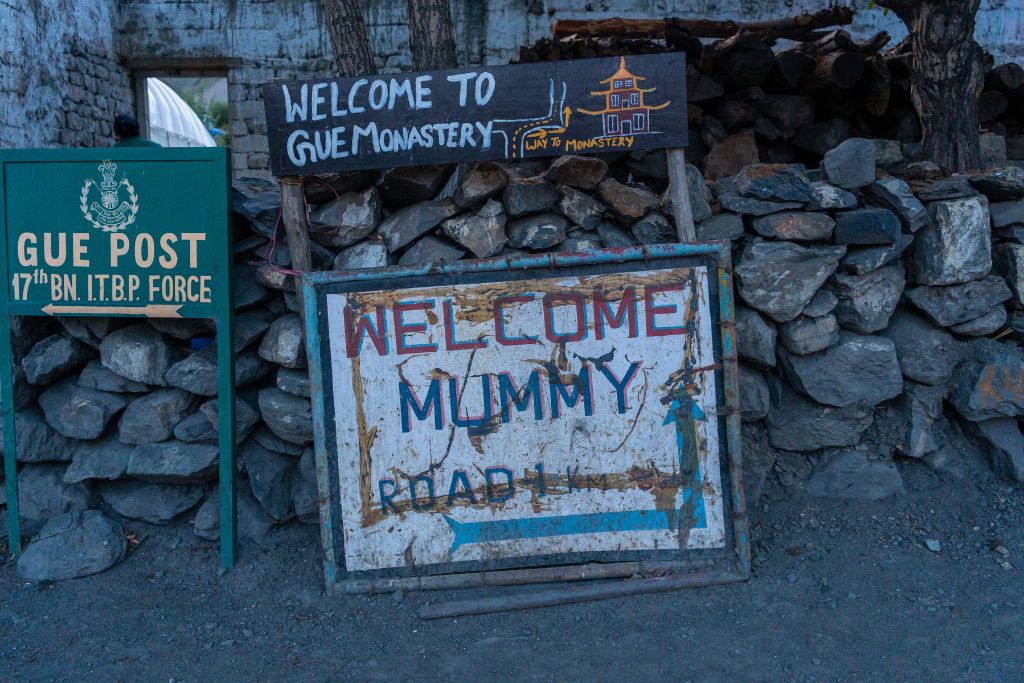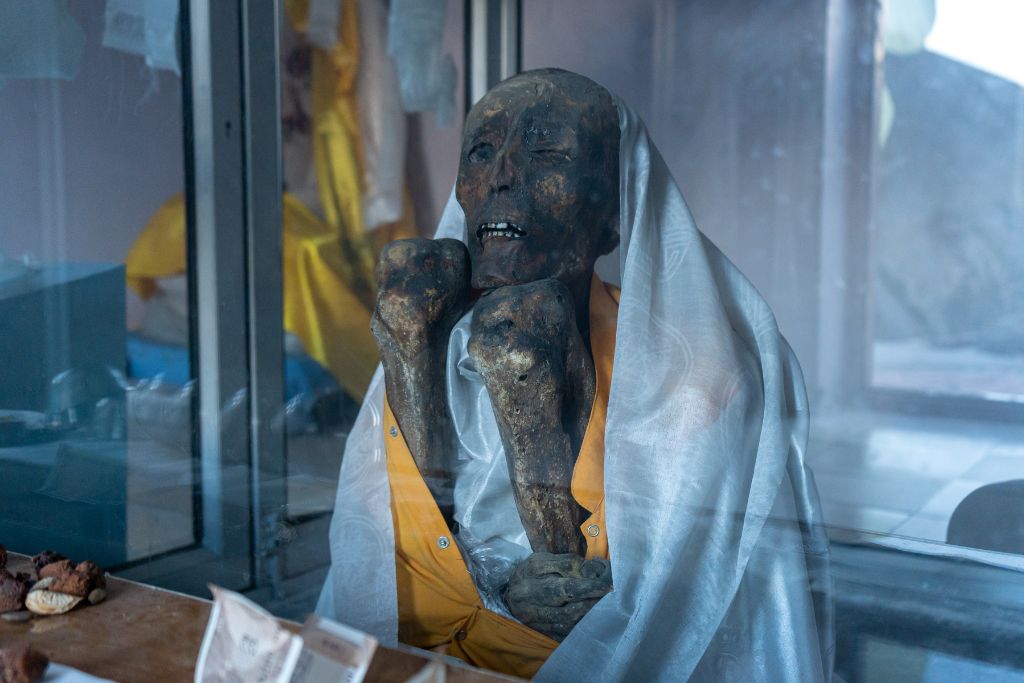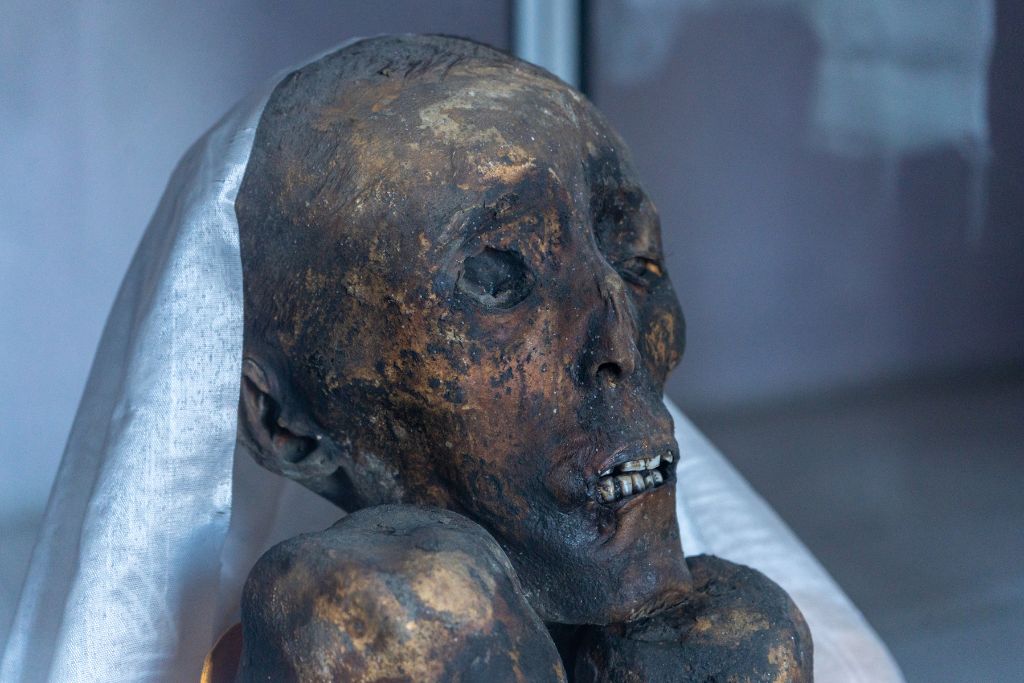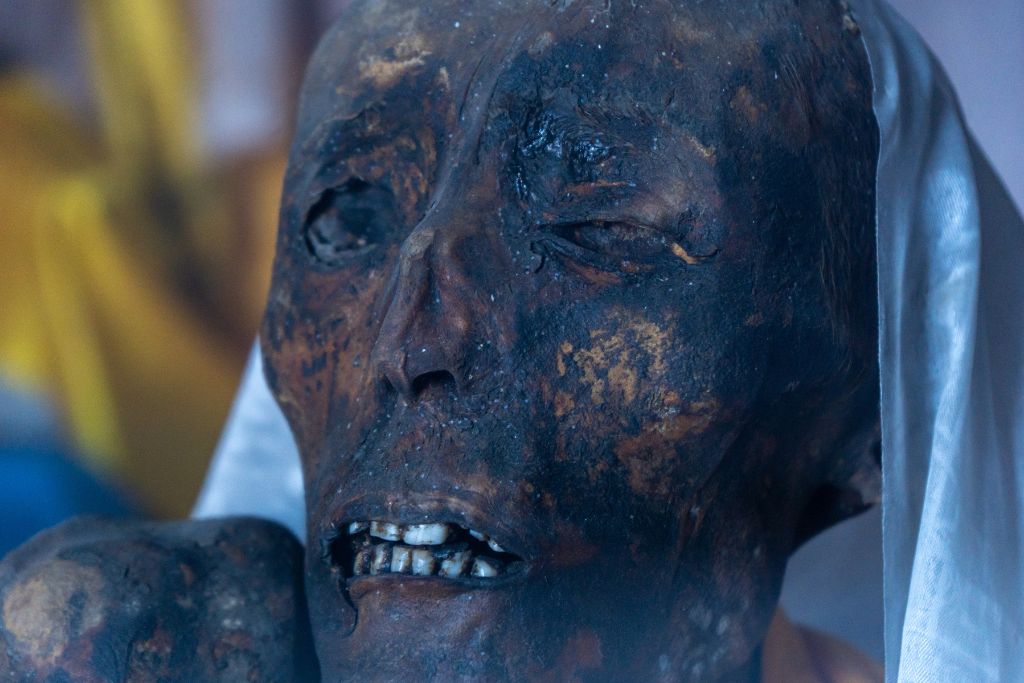Gue is a tiny little village close to the border of Tibet that attracts tourists from all around the world because of a very interesting discovery made by the ITBP in 1975 during one of their excavations to build bunkers. If you are an iPhone user, you’ll be automatically updated to China’s time when you visit Gue.
Gue is located in Spiti-valley of Himachal Pradesh, and like the rest of the valley practices Buddhism and follows a culture similar to that of Tibet. Gue is also known as the “mummy village”.
The Zangdok Palari Monastery, dedicated to the Padmasambhava is one of the major attractions here. The Monastery building is fairly new. However, the artwork in it is very delicate and detailed.
To some, the art in evidence at Gue is reminiscent of the aesthetics of the Martin Scorsese film Kundun. You can see the statue of the Padmasambhava, and other important figures, inside the monastery.
However, the key attraction of Gue is not even the monastery. Gue hides a very interesting secret.When you visit the monastery you’ll notice a small white house, in the shape of a block, on the left of the Gompa.
The structure houses the mummy of Lama Sangha Tenzin which has been preserved for about 550 years by embalming. The sitting posture of the mummy suggests a monk’s life of meditation and prayer.
The darkening of the mummy’s skin happened due to the carbon emitted by multiple candles that were burned in front of him in prayer.
It is believed that the mummy’s eyes were probably plucked out by birds. His teeth are still intact and upon closer inspection, you will also see strands of hair still attached to the scalp.
The lead image on top shows the mummy of Lama Sangha Tenzin, who is an inspiration for the people of the region and is worshiped by many who visit Gue in Himachal’s Spiti.
Photography and reporting by Atiqur Rahman, a Delhi-based photographer who hails from Nagaland.

